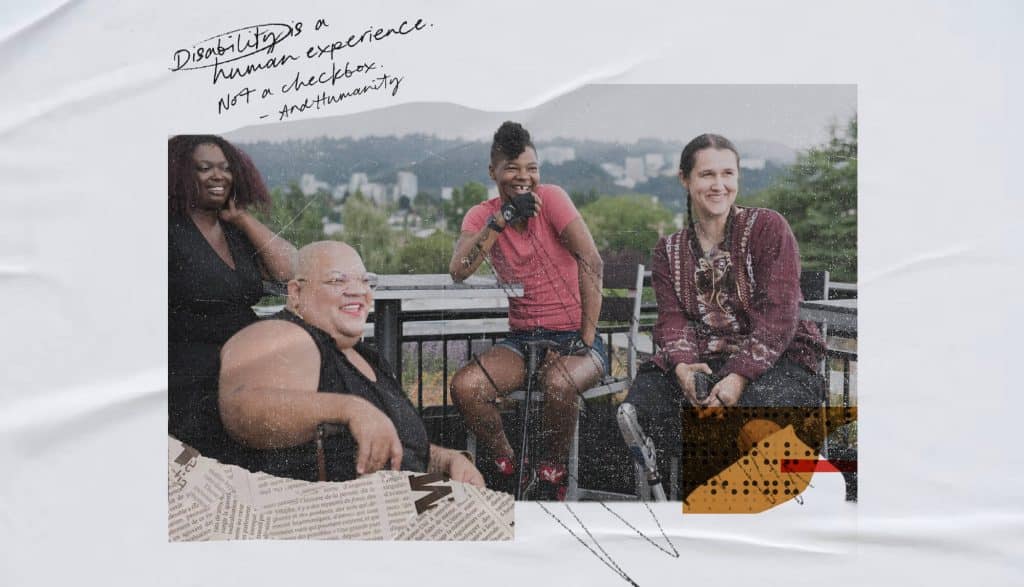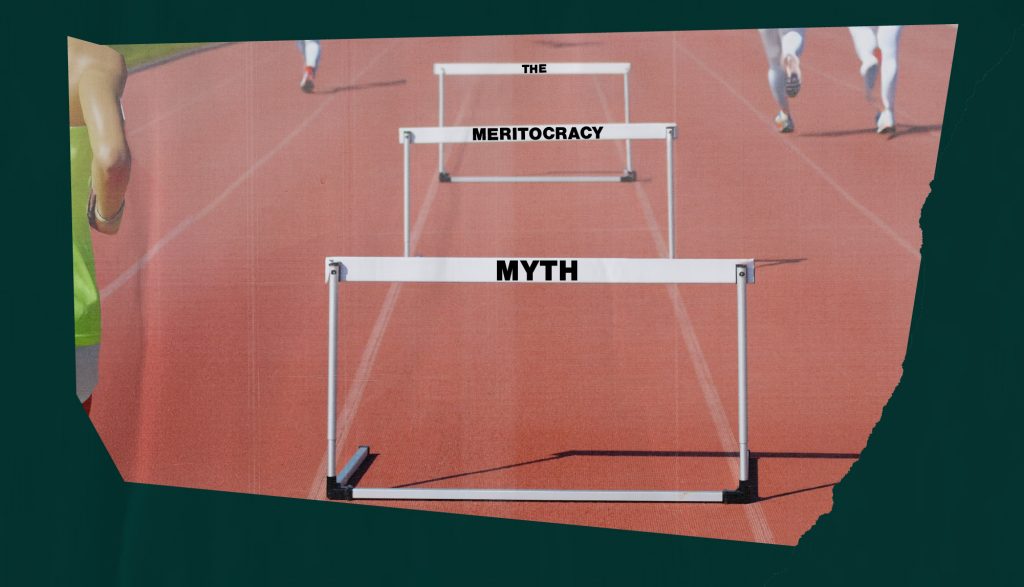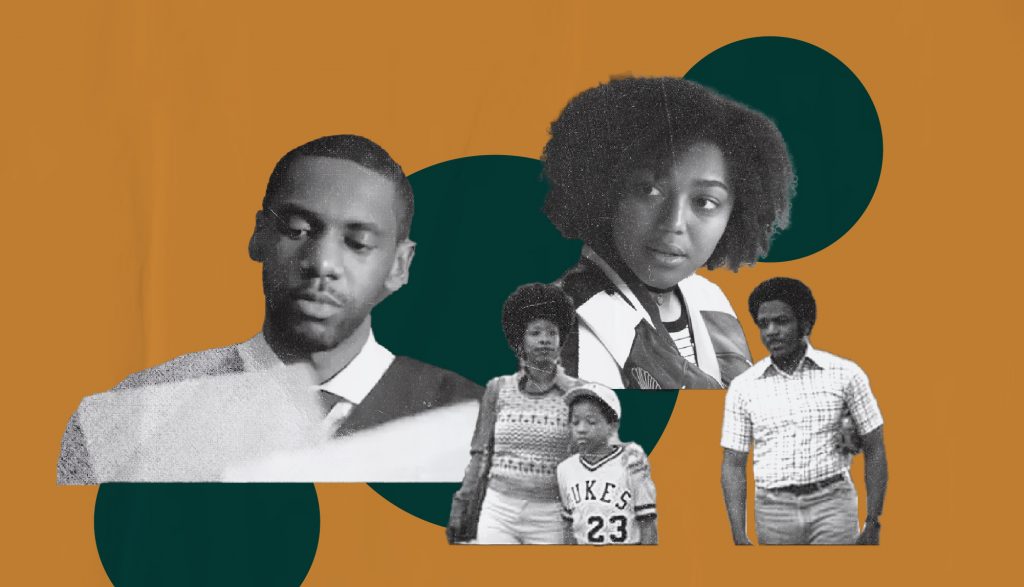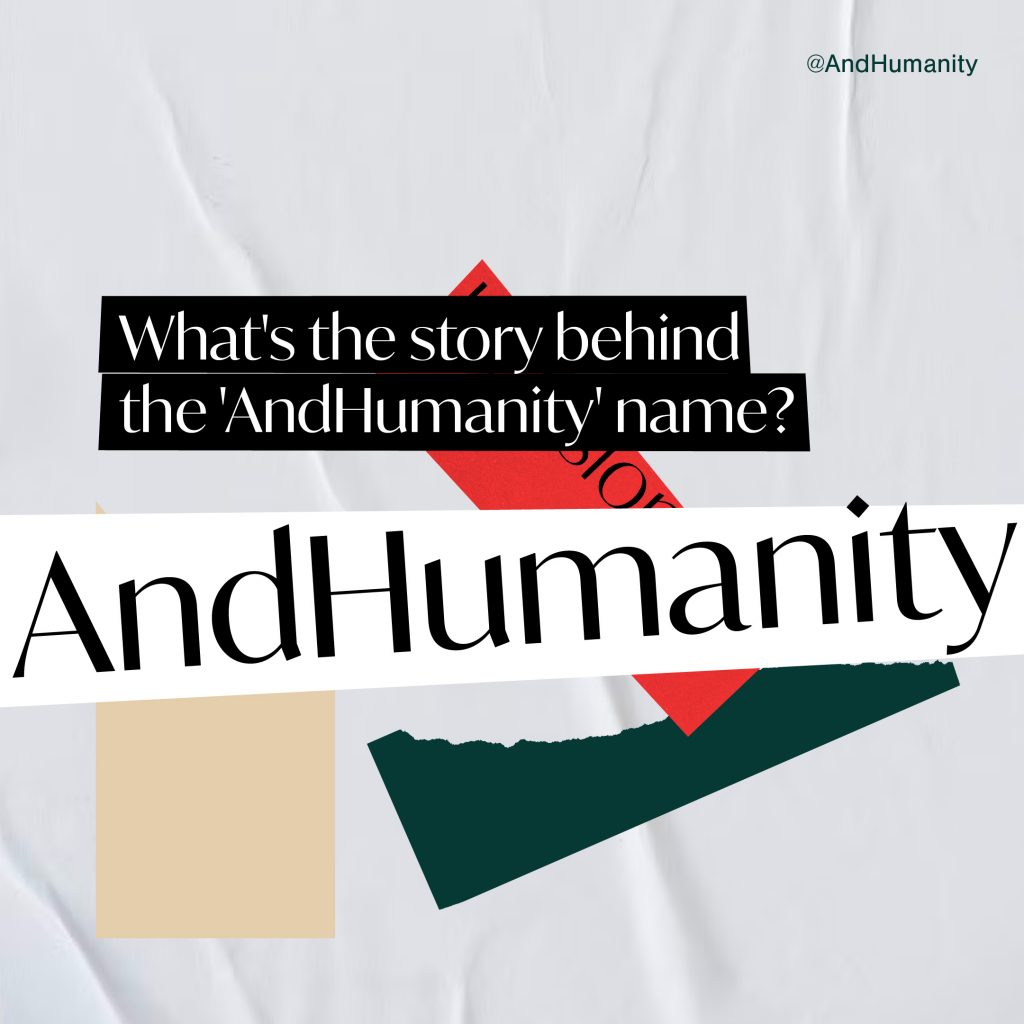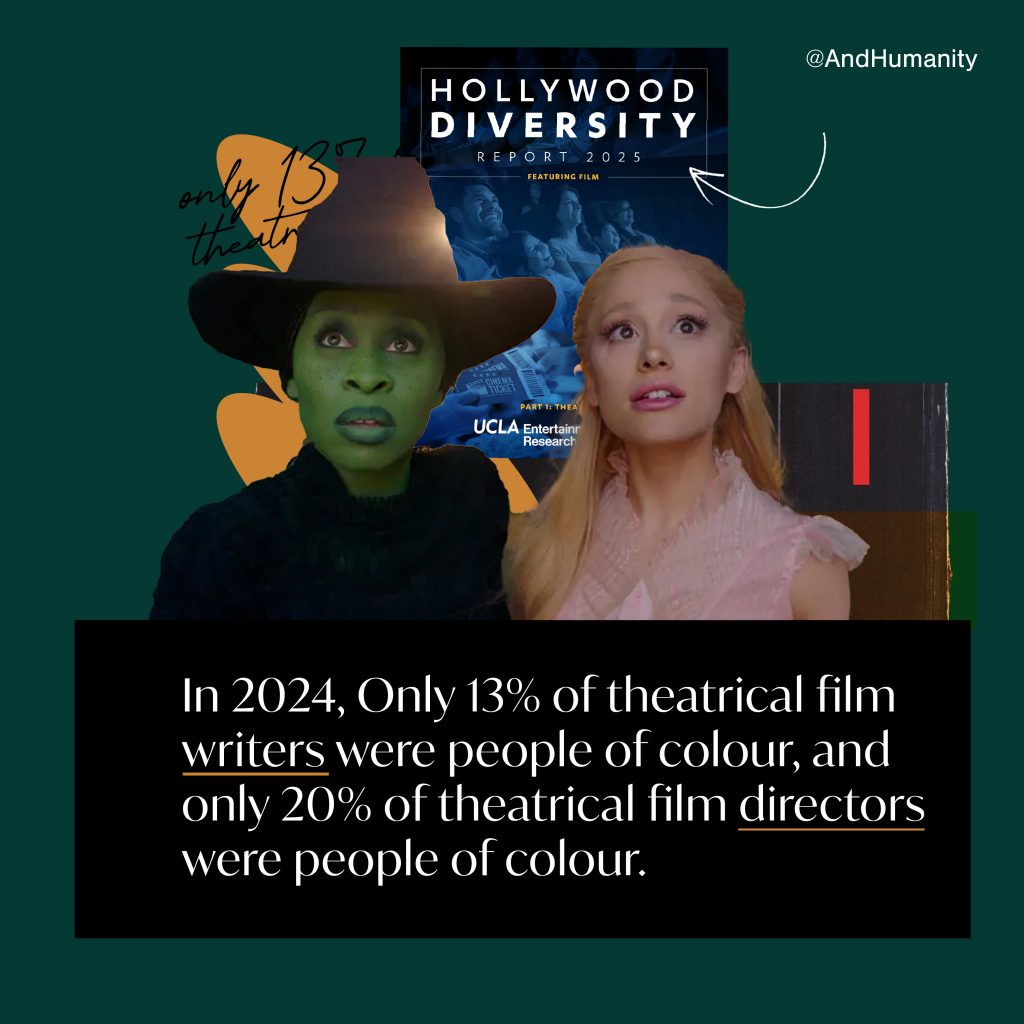This article was written by Sydney McNeill (they/them), a queer, multiply neurodivergent disabled person. Sydney is a white (Norwegian/Scottish ancestry) settler, grateful to have grown up and to currently reside in amiskwacîwâskahikan (Edmonton), on Treaty 6 Territory. This is the traditional land of many Indigenous peoples, including the Cree, Dene, Nakota Sioux, Saultaux, Blackfoot, and Métis peoples. Sydney works as Director of Justice, Equity, Diversity, and Inclusion Strategy at AndHumanity. They’re a parent to two children, a lifelong learner, and a lover of all things creative.
Something weird happens in inclusive work around disability. People suddenly turn to legislations, rigid rules and checkboxes. Digital content follows the W3C guidelines. Check! Social media reflects best accessibility practices. Webpages are compliant according to the AccessiBe web assessment. Check! Check! We’re accessible! Done.
Are you?
Don’t get me wrong – the technical, standardized aspects of accessibility are important. Things like contrast, font size, and image description best practices exist for a reason and are crucial considerations in how we market and communicate. Automated assessments, gap analysis tools, are a great start to understanding urgent issues and opportunities for growth. In fact, these things are foundational to inclusion. And these things are a baseline, a beginning. They’re there to learn more about and build upon.
As a person with multiple equity-deserving dimensions of identity, I sometimes consider my experience with disability as related to my experience with queerness. Of course, the two aren’t separate. My lived experience is uniquely defined and shaped by each and every one of my identities. There’s no separating the queer parts of myself or my experience from the disabled ones. But, what I will say, is that society is quick to separate bits of who we are into separate boxes. And, when I look at how each box is regarded in inclusion work, I’m left confused and disheartened by many approaches to accessibility.
I’m not saying that queerness is more accepted than disability – I’m not willing or able to compare oppressions. There’s no shortage of misunderstanding, misinformation, discrimination, oppression, and downright hatred directed toward the 2SLGBTQIA+ community. (And still we thrive, find joy, and build community.)
What I mean is that, in the inclusive spaces I inhabit, queerness is generally understood and approached in ways that feel warm, human, communal, and relational. Queerness sometimes even feels expected. Those who want to be more inclusive appreciate the multitude of identities within the 2SGLBTQIA+ constellation. Experiences like coming out or transitioning or embracing one’s authentic self are recognized as unique and deeply personal. Distinct identities like being Two-Spirit are recognized and respected. Individual stories are celebrated and valued. These shared human experiences build connection – between those with lived experience and those without. And action is taken based on a collective desire to create spaces and systems where everyone belongs.
Yet, when I show up to support accessibility in these same inclusive spaces, I’m often met with numbers, policies, and workflows. A generalized sentiment of, look, we’re following the rules. An absence of disabled perspectives, a missing appreciation for nuance. There’s a lack of empathy. I’m not experiencing disability being treated as a human experience. I’m not witnessing the same appreciation for the many distinct identities and communities that fall within the dimension of disability. I’m not noticing people being centered. Instead, there’s compliance. There’s avoiding legal repercussions. There’s checkboxes and to-do lists.
For example, when I look up autistic design accessibility (one dimension of accessibility that relates to my own lived experience), the first result is a list of things not to do:
- Don’t use bright colours.
- Don’t rely on animation that can’t be stopped.
- Don’t use figures of speech.
- Don’t be inconsistent.
Sure, these things are going to help me access your content. But are they going to make me feel included or valued? Are they going to build trust? Are they going to ensure a positive experience? The answer is no, they’re not. But let me tell you Why. These are the minimum standards set for compliance. Compliance is important. Disabled people deserve to access your content. And compliance alone isn’t enough. This is where we in the marketing and communications field are failing. We’re getting only part of the way there with accessibility.
Accessibility extends well beyond font size, captioning, formatting. In addition to ensuring access, accessibility is about enabling full participation. This aspect of accessibility needs more of our collective attention. People need to feel safe to participate. We need to feel welcome to participate. We need to feel valued to participate.
Once we’ve asked whether people can access and process information, we need to ask ourselves about engagement. Is this content welcoming? Reflective? Respectful? Authentic? Inclusive? Adaptive? Resonant? Is genuine commitment and care demonstrated? These are all aspects of accessibility. If an organization doesn’t acknowledge, care about, or strive to include me – a disabled person – in the content it’s making “accessible”, personally, I don’t care how many rules around accessibility it follows or how many checkboxes it ticks off.
While this isn’t a comparison between how we interact with different dimensions of identity, it is a call to action. I invite people to learn from the nuance and humanity in other areas of inclusion and apply these same practices to disability inclusion.
In inclusion work at large, we at AndHumanity often encourage our clients to consider the why. Because the how will change. Best practices constantly shift and vary by context. Not to mention, where’s the meaning behind following processes you don’t understand the importance of? Memorizing a list of rules is a sure way for expertise to become outdated and personal connection to dwindle. When we understand the human experience, the principles, the why behind inclusion work, we live the values and embody the curiosity necessary to embrace current best practice. We stay open to other ways of doing. We show up for the people and not the checkboxes. After all, that’s why we’re in this work – for the people.
Best practices exist for a reason. They are crucial considerations in how we market and communicate. These things are foundational to inclusion. And these things are a baseline. In addition to ensuring access, accessibility is about enabling full participation. We are responsible for doing more than being compliant. We are accountable for what we put out into the world. We create the checkboxes. We can choose to show up for the human experience.
I want accessibility beyond legislation. I want accessibility beyond a long list of actions to take or specifications to follow. I want accessibility as a lens of care and connection. I want accessibility as a direct and explicit opposition to ableism. I want accessibility as an opportunity for leadership from and expression of care for the diverse constellation of disabled individuals and communities. And I think the first step is advocating for a more human approach.
Join me?
